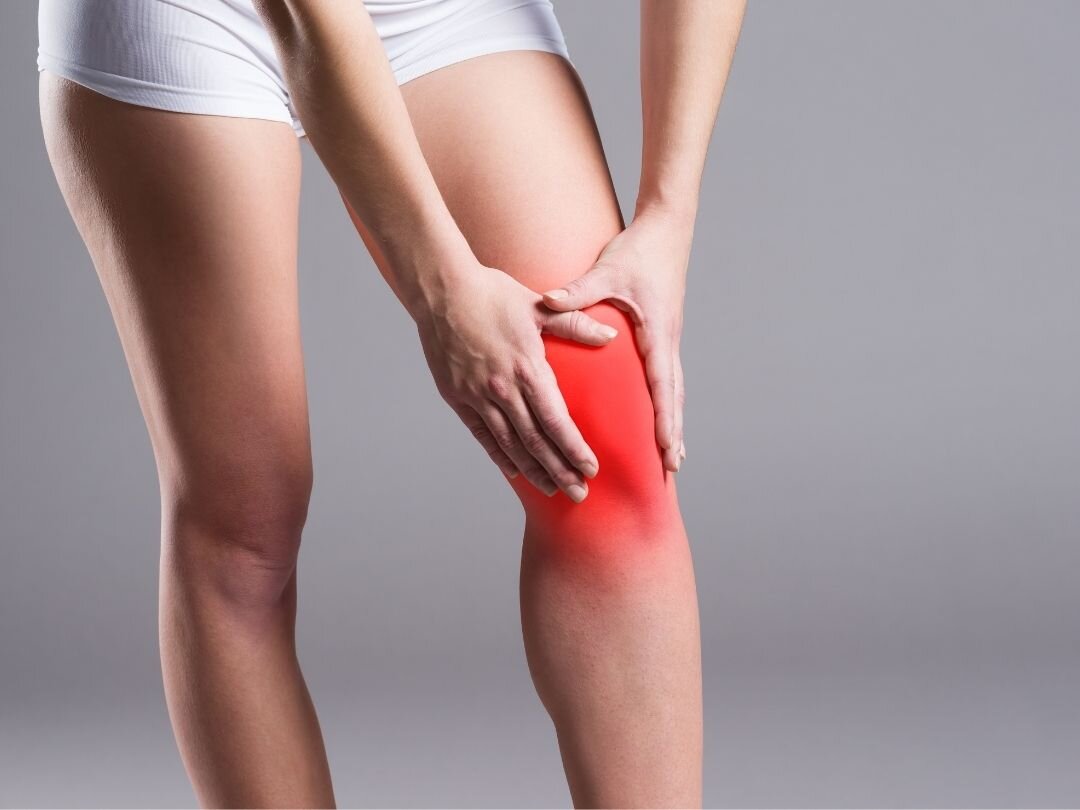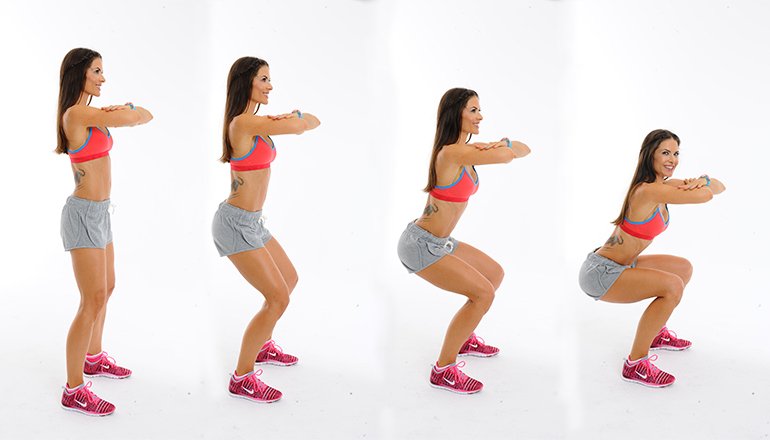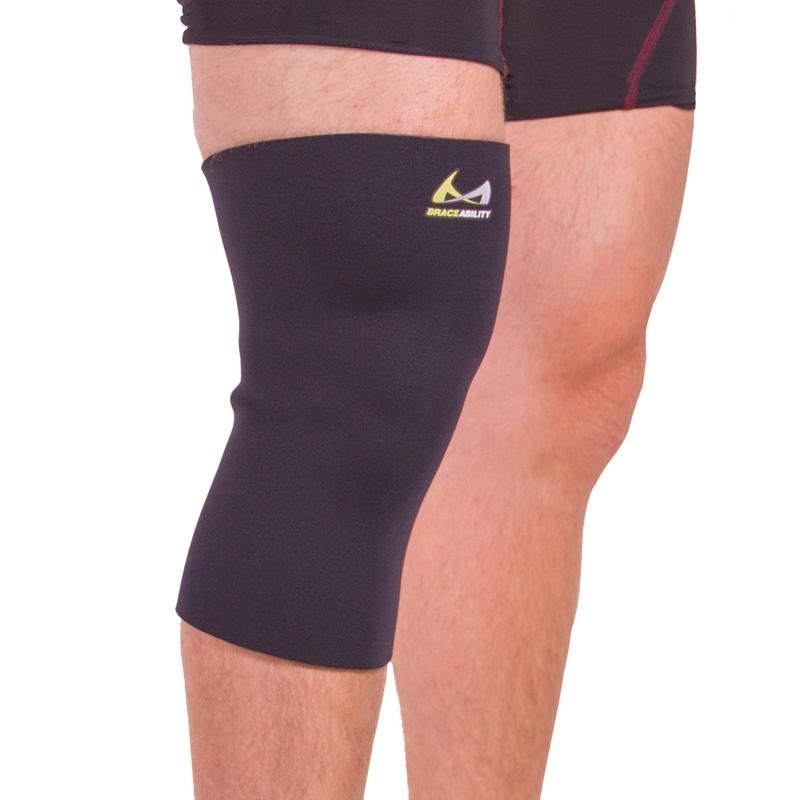
Knee Pain
Contents
What causes pain in your knee and swelling? How about knee pain without injury? We get asked this in clinic on a daily basis. In fact, a recent surge in the prevalence of knee pain has been observed among the general population. Between the year 1974 and 1994, a 65% increase in the incidence of complaints related to knee pain was noted. An estimated one in every four adults is expected to experience knee pain at some point in their lives, leading to an impairment in their overall quality of life, as well as reduced mobility.
Causes of Knee Pain
When it comes to looking at what causes pain in your knee, it is often difficult to provide a single answer. The knee is a complex structure that consists of ligaments, joints, muscles, and other tissues. Irritation to any of these tissues often lead to pain.
Below, we have listed a brief description of potential problems that may contribute to the development of either chronic or acute severe knee pain, as well as accompanying symptoms.
Distal iliotibial band syndrome – This typically presents as pain in the outside of the knee. When the connective tissue that is located between the outer region of the thigh and the knee itself become overused or is injured, a condition known as distal iliotibial band syndrome, also referred to as IT band syndrome, can develop. Tenderness may also occur, along with a reduction in the mobility of the knee.
Patellar Tendonitis – This presents as pain below the knee cap. When the tendon that is responsible for connecting the tibia (shinbone) to the patella (kneecap) is damaged or injured, inflammation can develop in the area. Swelling of this particular tendon leads to the development of patellar tendonitis, which can cause pain that may range from mild to severe, depending on the severity of the inflammation and injury. This condition is sometimes also called "jumper's knee."
Patellofemoral syndrome – A condition where trauma or overuse of the joint that is located in the knee results in an inflammation that affects the patella, as well as the region that surrounds the kneecap. A common issue with patellofemoral syndrome is poor tracking of the knee cap. Pain level depends on the severity of damage and inflammation. Some people may refer to this condition as either "runner's knee" or "jumper's knee."
Torn Meniscus – There are two menisci in every knee: the medial meniscus and the lateral meniscus. When one of these structures are damaged, it causes excess pressure to be placed on surrounding cartilage, ultimately leading to wear and tear. This can contribute to osteoarthritis, as well as pain symptoms. This can also be accompanied by swelling, clicking, popping, or locking of the knee joint.
Knee Sprain – Knee sprains are common and often occur among athletes, such as soccer players. This type of injury occurs when a ligament in the knee is torn or stretched. Pain can vary from mild to severe, depending on how serious the injury to the ligament is.
ACL Tear – The ACL is the main ligament of the knee that assists in providing stabilisation. Injury to the knee may cause the ACL to overstretch or tear. This can result in significant pain, instability of the knee, as well as interference with mobility, and day-to-day activities. In many cases, a “popping” sound is experienced upon injury.
Prepatellar bursitis – Irritation to the bursa, a small part of the knee that is located in front of the patella (kneecap), can cause a condition known as prepatellar bursitis. When this occurs, there is an accumulation of fluid in the region, which results in inflammation. In addition to the swelling, pain may also develop.
Understanding what causes sudden knee pain without injury is also important, as this can be a concerning issue. Possible causes of such a sudden onset of pain symptoms in the knee may be linked to:
Gout
Pseudogout (Calcium Pyrophosphate Deposition)
Knee Osteonecrosis
A tumor
Infection
Symptoms
Knee pain is often accompanied by additional symptoms, depending on the specific underlying cause. The accompanying symptoms may include:
Swelling in the knee
Redness in the affected area
Tenderness
Stiffness
Reduced mobility and limitations in movement
Additionally, some people may find that the pain radiates from their knee toward their thigh. Not all injuries will also lead to thigh pain, but it is still an important accompanying symptom to be taken note of.
The duration of how long your knee pain lasts depends on a few factors. The type of injury is an important factor that can be used to estimate how long a person will experience pain and other symptoms in their knee. In some cases, such as with the development of osteoarthritis, chronic pain is to be expected.
Knee Pain and Swelling
Swelling often accompanies knee pain and typically indicates that the joint is inflamed and tissues in the knee joint have been irritated. Unfortunately, swelling does not tell us exactly what ligament, muscle, or cartilage has been damaged in the knee. The location of the swelling (in the knee, behind the knee, inside or outside of the knee) is also not diagnostic for determining what has been injured. To determine the exact cause, a physical assessment is required.
A common cause of knee swelling is from trauma type injuries, such as a direct blow to the knee. Alternatively, swelling that slowly builds up and comes in spurts may be more related to certain chronic conditions, such as osteoarthritis, which can cause slow low-grade inflammation. Swelling can also occur during or after sport, which is more related to poor mechanics and repetitive overload of the knee.
Runner’s Knee
Runner’s knee refers to a wide range of symptoms that often occur among athletes who run a lot. Different conditions may be referred to as “runner’s knee” in certain situations.
In the majority of cases where a runner presents signs of knee pain, the cause would be related to overstretching or overusing of certain knee-related structures. ACL tears and meniscus tears are very common in runners. Runner’s knee can also be a combination of patellofemoral syndrome or iliotibial band syndrome (see ‘Causes of knee pain’ for more information). As such, it is important to have your knee assessed by a qualified sports chiropractor to identify the exact cause of your pain while running.
Runner’s knee is most often treated without surgery. Rest, ice, compression, and elevation, a treatment technique often referred to as “R.I.C.E.” is one of the most common options that are used to alleviate early symptoms. This is a good way to alleviate the initial symptoms like inflammation, tenderness, and pain but unfortunately the results are not long lasting, and they do very little to fix the knee pain.
The best way to treat runner’s knee is by starting with a video analysis of your running gait. By thoroughly assessing your running technique, we can pinpoint the specific cause, treat the tendons or joint structures that are damaged, and begin an individualised rehabilitation program to stop the knee pain.
Other treatments that are also good for alleviating symptoms caused by a typical runner’s knee may include:
Anti-inflammatory medications like NSAIDs.
Sports chiropractic therapy
Shoe inserts
Patellar brace
Patellar taping
Basic Running Technique Tips
Due to the high prevalence of knee pain and knee injuries among runners, we often advise preventative measures on how to avoid knee pain after running, as well as during running sessions.
There are various techniques that can provide an effective reduction in the risk of knee pain and injuries. Some important strategies include:
Avoiding heel striking and lifting the knees too high while running
Knees should be bent and kept soft when running
Feet should always be kept in a straight direction
Inexperienced runners should avoid fast and sudden turns that may cause them to twist their knees
The runner should ensure their body leans slightly forward when they are running
Knee Pain with Squatting
Squats are an extremely popular exercise and a fundamental movement we use every day. Athletes in Crossfit, powerlifting, or regular gym-goers will often include some form of squats in their workout.
However, even the less active bunch will squat on a daily basis. Believe it or not, we all squat, all the time! We squat every time we get out of bed, stand up from a chair, or even getting off the toilet seat. So squats are a vital movement that everyone needs to know how to do well.
Unfortunately, those with existing knee pain often experience an increase in their pain symptoms when they perform squats. There are different reasons why pain may be experienced when performing a squat. Some common reasons why a person may experience knee pain when they squat can include the following:
Patellofemoral syndrome
Patellar tendonitis
Osteoarthritis
Previous trauma to their knee
Knee injury
Iliotibial band syndrome
A physical examination is vital in helping a person understand why their knee may hurt when they squat. In our sports chiropractic assessments, we break down the squat with video analysis to pin point the exact cause of the patient’s knee pain. Most often, we find that poor squatting technique leads to overloading of particular tissues, thus leading to injury.
It is also important for people to learn how to avoid knee pain when squatting. As mentioned before, poor technique can lead to tissue overload, which ultimately results in knee pain. So here are some guidelines for good squatting technique:
Weight on your heels to activate the glutes
Knees in good alignment, falling in line with your second toe
Knees need to avoid dropping inwards (towards your midline)
Your back should be upright and straight with a proud chest
The feet should be shoulder-width apart (this can vary)
Most importantly, get a good warm up! There is nothing worse than office workers rushing to the gym and starting squats without a warm up. When you sit all day, your glut and leg muscles are fast asleep so you need to wake them up with a good dynamic warm up. By doing so, you prime the muscles to take on the load as opposed to damaging the joints during a squat.
Imaging
In some cases, a series of imaging tests may be needed in order to identify the issue at hand, as well as to determine the severity of the condition. However, this is not often the case. Management and rehabilitation of the knee can often begin without any further imaging.
X-rays are usually the first protocol when it comes to imaging tests, which often helps a physician determine if the person might be experiencing arthritis, growing pains, or potential fractures.
If there is a locking of the knee or the pain is localized to an area around the lateral or medial parts of the knee, an MRI scan may be requested as well. In these cases, the MRI scan can provide a more detailed overview of damage and is more relevant for injuries such as ACL tears, MCL or LCL tears, meniscus tears or muscle/tendonitis injuries. MRI is important for these particular injuries as these tissues cannot be seen on an x-ray.
Treatment
Treatment for knee pain plays an important role in preventing more serious complications and to speed up recovery. There are a number of treatment options that can be used to stop the knee pain naturally.
Rest is obviously important since the knee is a weight bearing structure. Following an injury, rest gives the knee time to heal. If you return to strenuous activities too quickly after an injury, it can make the damage worse and this prolongs your recovery time.
Ice packs can be used as acute treatment to help reduce inflammation and pain. Some people also utilize heat in order to further assist in the reduction of inflammatory symptoms. The cold temperature provided by an ice pack helps to reduce the signaling of pain by nerves in the area. When heat is applied to the knee, it helps to improve blood circulation, enhancing the delivery of nutrients that may assist in speeding up the healing process.
Other at-home treatments that may be utilized to assist in managing the pain include:
Avoiding any strenuous activity, even around the house, at least for the first few days
Wearing a knee sleeve to provide compression. This minimises space for swelling to build up
Taking over-the-counter drugs to help reduce inflammation and block pain receptors
Use over-the-counter anti-inflammatory gels to assist with swelling
Try keeping the knee elevated to help reduce swelling
However, if you’ve tried to take care of the knee pain at home, but it’s not getting any better after one week, it is advisable to have your knee assessed. A sports chiropractor is best equipped to provide you an answer with what is causing your knee pain and further recommend the best course of treatment or imaging.
At clinic, we use a variety of different techniques and the tools we use with you will depend on your particular injury. For example:
Tendon and muscle type injuries, we might use Active Release Techniques, dry needling, or instrument assisted soft tissue mobilisation.
For ligament sprains (ACL tear, MCL or LCL), we may need special braces and sleeves. ACL sprains also require an exercise and rehabilitation program to strengthen the muscles around the ligaments and prevent future reoccurrence
Hamstring strains causing pain in the back of the knee and up to the buttocks are extremely common in soccer, AFL, sprinters, and other high-speed running sports. These injuries often require soft tissue therapy accompanied by a rigorous rehabilitation program to strengthen the tendon and muscle
Knee Surgery
Non-surgical treatment options are usually the first options provided to a person when they present signs of injury or damage to their knee. There are, however, cases where these treatments will not yield effective results. In such a case, the person may be advised to undergo a surgical procedure to correct certain issues and to alleviate the symptoms that they are experiencing.
Different types of knee surgeries are available. The particular procedure performed on a person will depend on a few factors, such as the specific condition that they are experiencing and sometimes the severity of the condition. Common surgeries that are performed include:
Arthroscopy
Meniscus repair
Quadriceps tendon repair
Patellar tendon repair
ACL reconstruction
Partial knee replacement
Knee replacement
A complete knee replacement has the longest downtime and healing time. This is why people often ask how long they will have pain after knee replacement surgery. Generally, people should expect to experience some pain during the first six months following the procedure.





